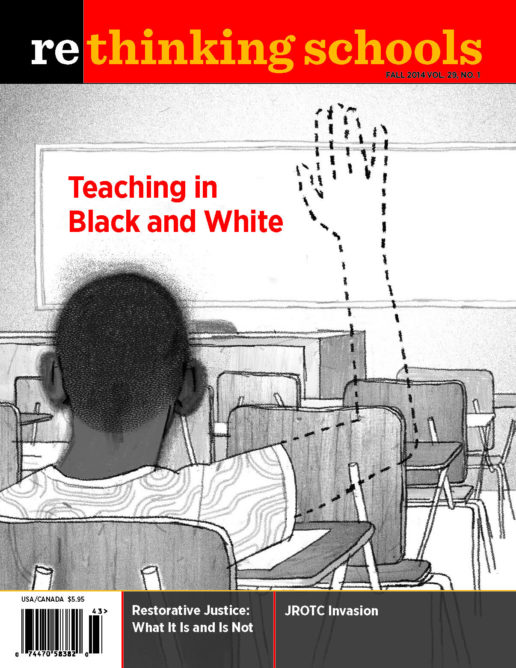Preview of Article:
Rocketship to Profits
Silicon Valley breeds corporate reformers with national reach
Illustrator: Ethan Heitner
Nearly every metropolitan area these days has its own wealthy promoters of education reform. Little Rock has the Waltons, Seattle has Bill and Melinda Gates, Newark has Mark Zuckerberg, and Buffalo has John Oishei, who made his millions selling windshield wipers.
Few areas, however, have as concentrated and active a group of wealthy reformers as California’s Silicon Valley. One of the country’s fastest-growing charter school operators, Rocketship Education, started here. A big reason for its stellar ascent is the support it gets from high tech’s deep pockets, and the political influence that money can buy.
Rocketship currently operates nine schools in San Jose, in the heart of Silicon Valley. It opened its first school in Milwaukee last year and one in Nashville, Tennessee, this fall. Its first two schools in Washington, D.C., where almost half the students already attend charters, open next year. Rocketship plans include running eight schools in Milwaukee, in Nashville, and in D.C. in the near future.
Rocketship also proposed a charter school in Morgan Hill, just south of San Jose. But there they ran into resistance from parents, teachers, and the teachers’ union. That successful campaign to block Rocketship and protect local public schools highlights the importance of confronting charter chains as they try to infiltrate school systems across the country.
“Blended Learning”
The Rocketship Model
“Blended learning,” the hallmark of the Rocketship education model, is based on using computers more and teachers less. Its roots lie in a valley dominated by high-tech factories, where electronic assembly lines belie the hype of entrepreneurship and “creative disruption.” Education policy analyst Diane Ravitch describes Rocketship charters as “schools for poor children. . . . In this bare-bones Model-T school, it appears that these children are being trained to work on an assembly line. There is no suggestion that they are challenged to think or question or wonder or create.”
A report by Gordon Lafer for the Economic Policy Institute, Do Poor Kids Deserve Lower Quality Education than Rich Kids? examined the Rocketship model: “The ‘blended learning’ model of education exemplified by the Rocketship chain of charter schools,” it found, “often promoted by charter boosters—is predicated on paying minimal attention to anything but math and literacy, and even those subjects are taught by inexperienced teachers carrying out data-driven lesson plans relentlessly focused on test preparation. But evidence from Wisconsin, the country, and the world shows that students receive a better education from experienced teachers offering a broad curriculum that emphasizes curiosity, creativity, and critical thinking, as well as getting the right answers on standardized tests.”
The contradiction between high-tech hype and regimented reality is a hallmark of the Silicon Valley model, and is not just found at Rocketship. “Blended learning” is promoted by John Fisher, who started the $25 million Silicon Schools Fund. Fisher is the son of Gap founders Don and Doris Fisher, among the world’s wealthiest clothing manufacturers and scions of San Francisco’s elite.
On the website of Navigator Schools, for example, a video promoting its Gilroy Prep charter (at the south end of Silicon Valley’s Santa Clara County) is full of superlatives like “incredible.” It claims its 1st and 2nd graders are “engaged 100 percent of the time.” Images show youngsters, each in an identical pale blue polo shirt with the Navigator logo, chanting in unison while a teacher holding an iPad moves through the classroom.
The slick video is just one indication of the big money at stake in the expansion of corporate charter schools in Silicon Valley. Students use “the best adaptive software,” the video enthuses. On their desks are “student responders,” remote controls with buttons for answering multiple-choice questions. “Gone are the days of textbooks and endless worksheets,” the narrator boasts.

